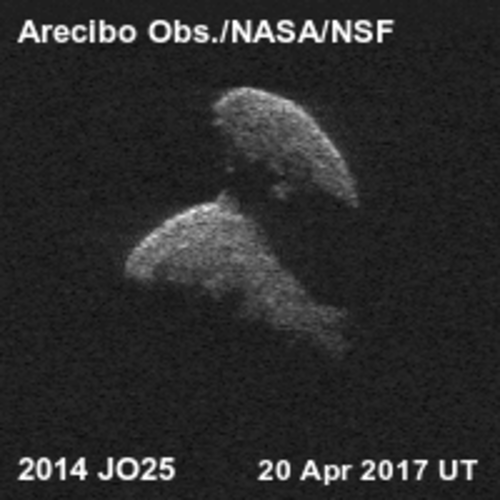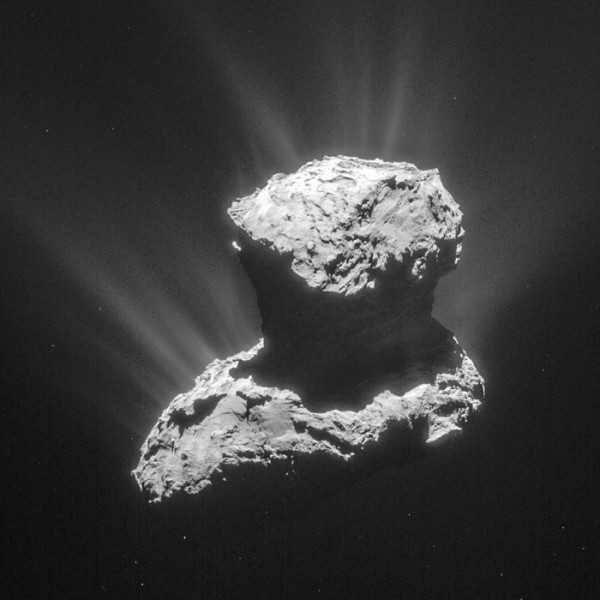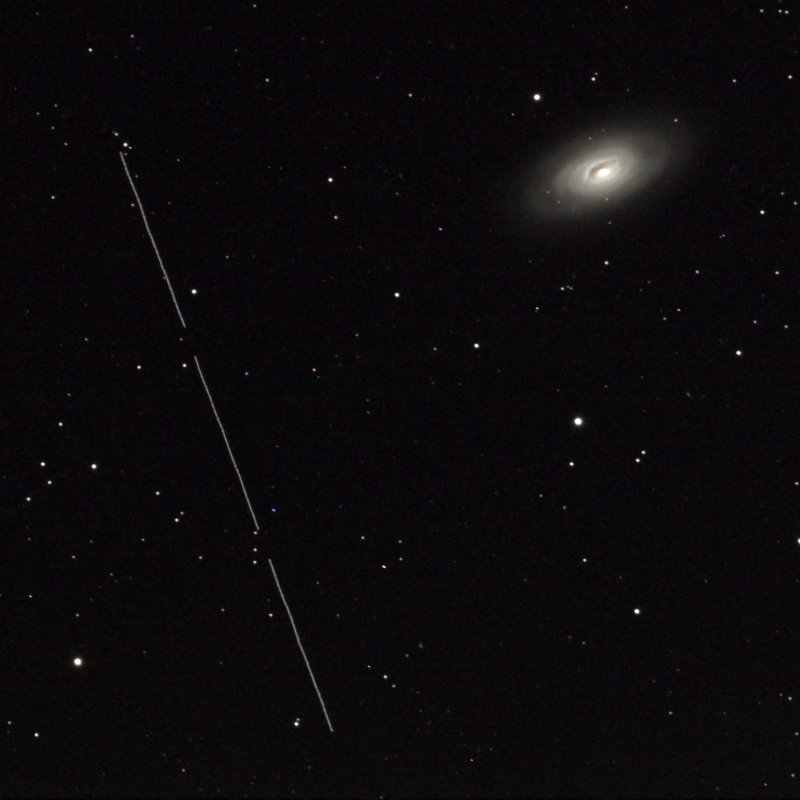
New, higher resolution radar images of the space rock that safely passed Earth on April 19, 2017 show that asteroid 2014 JO25 is very reminiscent of Comet 67P/Churyumov–Gerasimenko. We have good images of the asteroid only because it’s large and passed relatively close to Earth at only 4.6 lunar-distances. How do we know what the comet looks like? The European Space Agency’s Rosetta orbiter and the historic Philae lander explored Comet 67P for two years – from September 2014 to September 2016 – providing unprecedented views of the comet’s shape, surface features and much more.
View Rosetta’s image gallery of Comet 67P

Asteroids and comets have different names in astronomical terminology, but both are small bodies orbiting our sun, and, in recent years, there’ve been some asteroid-comet hybrids that have blurred the distinction between them. For example, 3200 Phaethon is labeled as an asteroid, but it’s also known as the parent body of December’s rich Geminid meteor shower; that’s strange because meteor showers are thought to stem from comets, not asteroids. Meanwhile, the object known as C/2014 S3 (PANSTARRS) has about a million times less water than any other comet known so far. It’s labeled as a comet, but is rocky – like an asteroid – not icy, like a typical comet.
Astronomers didn’t have much time to study asteroid 2014 JO25 as it swept past. But it was the largest asteroid to sweep so close to Earth since 2004, so of course many earthly telescopes were aimed its way.
Both the Arecibo Observatory in Puerto Rico and the Goldstone Radar in California obtained new radar images of asteroid 2014 JO25. During the asteroid’s closest approach on April 19, the radar images revealed that the space rock has a two-lobed shape, very similar in appearance to Comet 67P.
A good look at the new asteroid images also show some craters on its surface. Likewise, Comet 67P is cratered. Bodies in our solar system are often cratered. There was a lot of loose debris flying about billions of years ago. Some is still flying about today, which is why astronomers keep a close eye on asteroids and comets.
As for size, asteroid 2014 JO25 turned out to be bigger than expected. The space rock is at least 2,854 feet (870 meters) long. The comet is much, much bigger. It is 2.5 miles (4.1 km) long at its largest dimension.
Despite their difference in sizes, the asteroid and comet have similar rotational speeds. In other words, their “day” and “night” cycles are somewhat comparable. The new observations indicate the asteroid completes one spin in about 4.5 hours. The comet completes one spin in about 12.4 hours. Earth, of course, completes a single spin in about 24 hours … the moon in about one month.
Thousands of amateur astronomers around the planet pointed their telescopes at close-passing asteroid 2014 JO25 as it slowly past, in front of the stars, on April 19. The asteroid appeared as a very slowly moving “star.” Click here for amateur astronomers’ photos of the asteroid as it swept past.

Bottom line: Close-passing large asteroid 2014 JO25 is very similar in appearance Comet 67P/Churyumov–Gerasimenko. Both are double-lobed objects. We haven’t seen many comets, or asteroids, close up so … coincidence? Or will many objects in our solar system turn out to be double-lobed?











